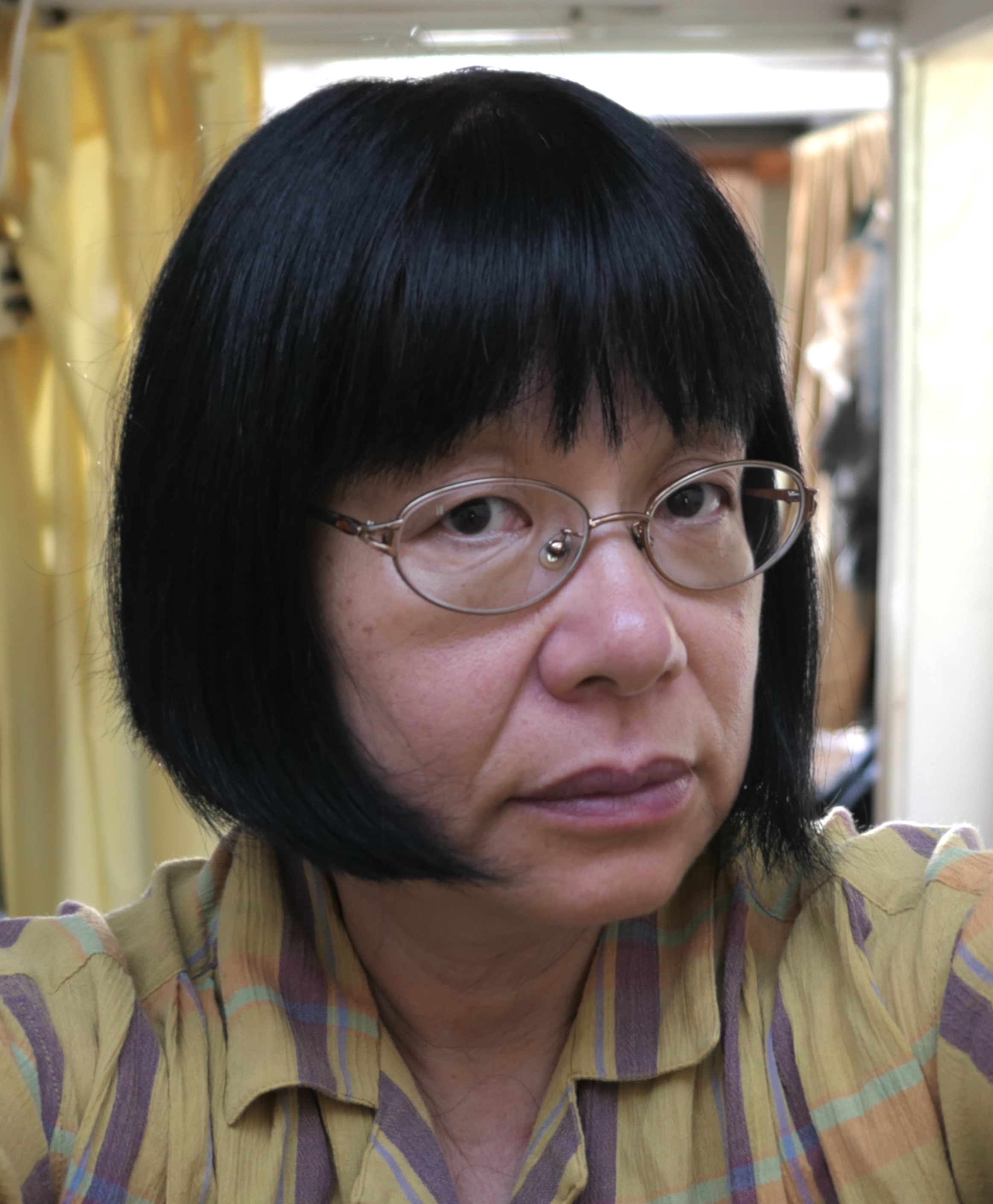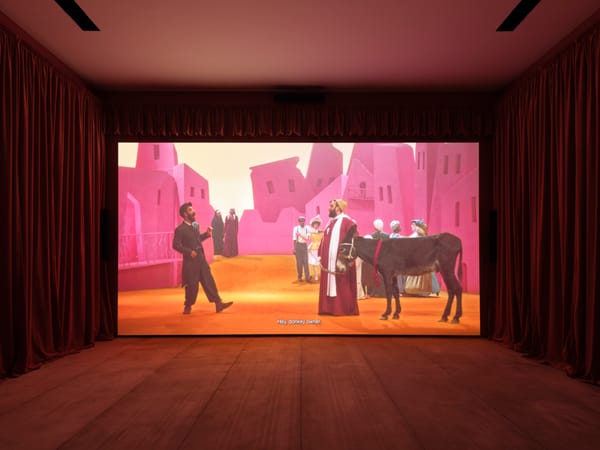Ideas
Embodied Histories: Interview with Yoshiko Shimada


Born in Tokyo in 1959, Yoshiko Shimada has made a career of asking uncomfortable questions about Japan’s history, breaking barriers in the early 1990s when she produced photographic works and installations about “comfort women”: a euphemism for the hundreds of thousands of women from Japan, Korea, China, and beyond who were forced into sexual slavery by the Japanese Imperial Army. She tackled the notion of historical erasure with her performance Becoming a Statue of a Japanese Comfort Woman (2012– ), taping her mouth and stationing herself next to global monuments of these victims and outside Japanese embassies worldwide to signify the silencing of this ugly chapter. When the Aichi Triennale’s display “After ‘Freedom of Expression’?” was shut down following threats and public outcry, primarily targeting Kim Seo-kyung and Kim Eun-sung's sculpture of a comfort woman, Statue of Peace (2011), she joined protests against the show’s closure. ArtAsiaPacific’s associate editor Ophelia Lai caught up with Shimada in Hong Kong—where she was researching radical artistic communities and forms of protest as part of an Asian Cultual Council-supported residency at Asia Art Archive (AAA)—to discuss censorship in Japan, transnational feminism, and art’s ability to respond to diffcult truths.
In response to the closure of “After ‘Freedom of Expression’?” artists and activists have posted on social media photographs of themselves in the same pose as the Statue of Peace (2011). You then compiled these on a Facebook page. How did this campaign start?
I met [participating artist] Mónica Mayer in June at a pre-event for the Aichi Triennale. After this [controversy], she sent me a photograph of herself sitting [in that pose], because she knew that piece was a focal point. I was already in Hong Kong, so I took a photo sitting next to the comfort woman statue in front of the Japanese Consulate here. I posted both photos to Facebook and asked if anyone wanted to join in. Then my friend [Naples-based artist] Rosaria Iazzetta sent in her photographs so I decided to make an album. We’ve received photos from prominent artists—many from outside Japan. Initially, Japanese people sent in photographs, but there was a strong right-wing reaction—lots of hate mail. Afterwards, some Japanese people asked me to delete their images. It's very difficult to enact visible resistance in Japan because people are so afraid.
The Aichi Triennale doesn’t want to acknowledge that the closure has anything to do with pressure from the government. They received threatening emails, faxes, and phone calls, but the real issue is clear-cut censorship. It's obvious that the whole thing escalated after the Mayor [of Nagoya, Takashi Kawamura] demanded that the statue be removed. Japan cannot have an international exhibition like this anymore if it can’t ensure freedom of expression, or artists’ safety.


In the early 1990s, you started to tackle the issue of comfort women and Japanese women’s roles during World War II. What prompted this? How has the reception to your engagement with this taboo changed in Japan?
After the death of Emperor Hirohito, who reigned from 1926 to ’89, Japanese scholars, especially Yuko Suzuki, produced seminars and books about Japanese feminism and women’s collaboration with the military regime. So I started making artwork about it. There were several more books written on the topic by feminist scholars who were trying to re-examine Japanese women’s roles during the war, but it was very academic, not a nationwide movement.
The situation is worse now. In the general public, it’s become much more difficult to have discussions about anything to do with wartime, especially because of the revisionist movement that started towards the end of the ’90s. It gained so much power under Prime Minister Shinzo Abe. Publishing companies like Fujisankei Group started selling anti-Chinese and anti-Korean content denying the Nanjing massacre and the existence of comfort women. Young people don't learn anything about this in school. When I was teaching at Tokyo University, students knew nothing about comfort women.
In series such as Past Imperfect (1991–97), photographic etchings of comfort women and Japanese mothers, you dissect the complex relationship between female roles and nationalist imperatives. Could you elaborate?
During my research, I read the writings of some wartime feminists like Hiratsuka Raicho, who promoted a kind of spiritual feminism and the idea of national motherhood. The Empire encouraged women to have sons, of course, so that they could grow up to become soldiers. [In the 1995 photographic etching Baby Contest II] that’s the chrysanthemum seal, the symbol of the Japanese imperial family [covering the babies’ faces]. If you’re a Japanese mother, the “nation’s mother,” then the baby’s not yours, it’s the Emperor’s.
After the war, because Raicho only talked about this spiritual mother image, she was spared [from negative associations with the regime]. She became a leader of this “mothers for peace” movement. Ever since I was a child in the ’60s, I had an uneasy feeling about it because they have this simplistic stereotype of woman = mother = peace. This was also in the movement’s visuals, where women wear the same white aprons [kappogi, a Japanese symbol of feminine domesticity], and mothers and children hold white doves. There is something really not right or honest about this, so I started questioning this idea of motherhood, and Japanese female roles in the war.

Feminist discourse has long contended with how to address power imbalances between groups of women, and the complicity of one in the oppression of another. How do you negotiate the fraught politics surrounding the wartime experiences of Japanese, Chinese, Koreans, and women of other nationalities within the feminist framework of your practice?
In the ’90s, Ueno Chizuko, the leading Japanese feminist scholar, wrote a book in which she said feminism should transcend nationality, but I think we cannot really say, “Let’s forget about nationality.” One of my installations [Look at me/Look at you (1995)] is divided by a “magic mirror.” On the side with the wedding dress combined with kappogi, you only see your reflection; on the other side, with a Korean traditional dress under a yukata—what comfort women wore—you can see through the glass to the other side. That work talks about positionality, how what you see is in accordance with where you stand.
Quite recently, I worked with the Tomorrow Girls Troop (TGT), a multinational young feminist group, on the performance Becoming a Statue of a Japanese Comfort Woman (2018) in Los Angeles. It was realized with the help of many people so I felt more comfortable sitting next to the Korean comfort woman statue as a symbolic gesture of collaboration. But when I did the same performance in Seoul at a Wednesday demonstration, I felt I couldn’t equate myself with a Korean comfort woman, so I did not sit next to that statue; I was a little bit farther.
I think the comfort women issue has been hijacked and turned into a national issue of Korea vs. Japan, so there is a need to reclaim this as a human rights and women's rights issue.

How does clothing and the notion of embodiment factor in your work? We’ve talked about the kappogi, for example, and you and the artist BuBu de la Madeleine respectively dressed up as General Douglas MacArthur and Emperor Hirohito in the photo collage 1945 (1998).
In 1998, I was in New York and took Diane Torr’s “Drag King” workshop—it’s interesting how you can be a different person. It also leads to this argument about whether artists can use the experiences and issues of other people in their work. I think art is an intervention; you cannot just talk about yourself. When we dressed up as the American soldier, prostitute, emperor, etc., we wanted to take that history of occupation and military prostitution to today, because at the time we were also working on contemporary sex workers’ rights. Dressing up was a way to try to bring the issue back to us, back into our bodies.
Bones in Tansu: Family Secrets (2004)—an installation comprising a confessional where gallerygoers write down secrets, which you select and place into a chest of drawers—marks a departure from your works on collective memory and trauma. What was the intention behind this more intimate engagement with secrets and personal reckonings?
I was lecturing here and there, and saw the reaction of young people to Japanese history. I created the project to make them realize that history is part of their lives, but I had to make it more personal so each individual can relate themselves to the past.
The work was inspired by photographs of my grandfather, a policeman in Tokyo. He was ordered to beat alleged criminals to death with a stick immediately after the Great Kanto Earthquake (1923). He quit after that because he couldn’t bear it. He told the story to his kids, and my mother told me. I’m sure similar things happened in other families but they don’t talk about it. It's important that individuals look into their family history, to connect personal and collective memories.

Could you share details about your AAA residency?
When I visited AAA’s archives last June I found this brochure for an experimental school in 1968; I have been doing research on alternative education in 1960s Tokyo so I thought there might be some similarities. But it got difficult because a lot of the people who were involved have died. Then these protests started happening in Hong Kong and I decided it would actually be more interesting to research how educators and artists are reacting. I interviewed some people, including May Fung, and visited the Rooftop Institute. When you look at the graphics and placards at the demonstrations, which are organized like flash mobs, it’s like the movement itself has become an art form. I talked to some artists and they said they don’t want to make any artwork, or participate in the movement as artists; they just want to be one of the protestors.
You’ve stated that your work intends to provoke anxiety. It could be said that our historical moment is filled with anxiety, be it over political tensions, socioeconomic inequality, or environmental issues. How might art leverage anxiety and provoke reflection on contemporary concerns in a productive manner?
Making people anxious or uncomfortable is one way to make people think or see things differently. When things are simplified and convenient, it's easy to digest, easy to accept, but then you stop thinking about it. Everything becomes so impersonal and abstract. Art is not about producing stale, stereotypical slogans or dogmas. There are so many layers of meanings to things. I think rather than making people upset, artists are just exposing these layers and giving people room to think and view a different perspective. Whether or not they choose to is up to them, but artists offer that kind of opportunity.
Ophelia Lai is ArtAsiaPacific’s associate editor.
To read more of ArtAsiaPacific’s articles, check out our Digital Library.









